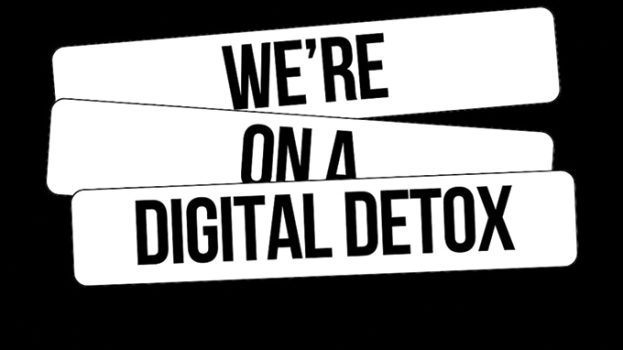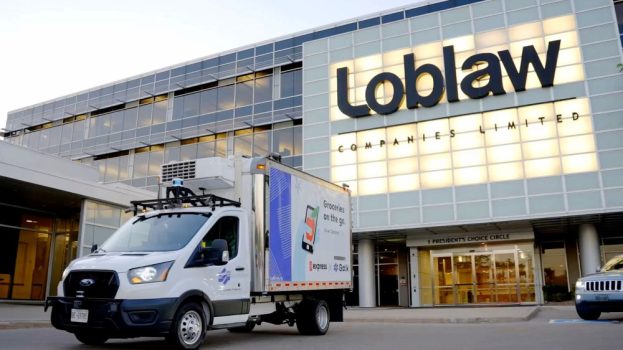
This article was previously featured in the Winter 2025 issue of Strategy Magazine under the title, The rise of women’s sports: How evolving attitudes are shifting the economics of the sports market.
By Sheima Benembarek
It’s no secret that women earn less than men. When you compare median hourly wages in Canada, women earn 84 cents for every dollar men make. The stat from the Canadian Women’s Association is an indicator of gender-based discrimination, but when it comes to women’s pro sports, the reality is more disturbing.
In a 2023 study by RBC and Wasserman’s The Collective, it was revealed that, on average, male athletes’ playing salaries are 21 times higher than those of women athletes. For instance, in basketball, men make an average $11.5 million, while women get $107,000. Male soccer players receive $400,000 in comparison to women, whose paycheck is a mere $54,000. And the average salary in the National Hockey League (NHL) is $3.5 million, while women hockey players typically make between $35,000 and $80,000.
“Throughout my time as a professional athlete, [players] have had second jobs,” shares Quinn, a Canadian professional soccer player for the National Women’s Soccer League club Seattle Reign FC and Canada’s Women’s National Team. “To continue to play the sport that they love is a hard decision. People consistently retire just because it wasn’t financially sustainable.”
 Quinn is a Canadian professional soccer player who plays for NWSL club Seattle Reign FC and Canada’s Women’s National Team.
Quinn is a Canadian professional soccer player who plays for NWSL club Seattle Reign FC and Canada’s Women’s National Team.
The justification, historically, has been that men’s sports generate significantly higher revenue from sponsorships, advertising and TV broadcasting deals. There’s also the perception that men’s events attract more spectators, which in turn means women’s sports receive significantly less press. UNESCO revealed that although 40% of all sports participants are women, only 5% of media coverage globally has been devoted to their games, limiting visibility and the opportunities that come with it.
This lack of interest and investment is a result of bias, explains Cheri Bradish, director of the Future of Sport Lab and chair of marketing management at Toronto Metropolitan University. “For 100-plus years, the Big Four leagues – the National Football League (NFL), National Basketball Association (NBA), National Hockey League (NHL) and Major League Baseball (MLB) – organized professional sports in North America, and the industry stuck with it. They didn’t see market value in the women’s space. [There’s] been this long-term commitment and thinking for men’s sport [only].”
As a result, women’s sports often only become professionalized decades after men’s sports, leading to smaller fanbases that tend not to attract big sponsors and advertisers. “[Women’s sport] wasn’t seen as something to be encouraged, certainly not monetized and commercialized,” says Allison Sandmeyer-Graves, CEO at Canadian Women & Sport. “It’s absolutely true that because women’s sport has been denied investment for so many years, men’s sport has had the opportunity to build fanbases and to grow and develop, and to test and learn.”
The turning of the tide
“It’s a rare day when there isn’t something exciting to announce,” says Sandmeyer-Graves, referring to Canada’s quickly-developing women’s leagues and the rush of companies that signed on as their partners in the last year. For instance, the Professional Women’s Hockey League (PWHL) recently attracted investment from the likes of Canadian Tire, Intact, Scotiabank and more than 30 other corporate sponsors.
Established in 2023, the PWHL – which includes the newly created Toronto Sceptres and Montreal Victoire teams – saw a historic inaugural season that brought in record-breaking attendance, counting 21,105 fans at one of the Montreal games last year. Ticket demand, ever since, has been overwhelmingly positive. In advance of its second season in 2025, the league put out the “Here’s to the Bold” campaign by partner Uninterrupted Canada, showcasing sports veterans and rising stars representing their new teams for the first time.
Last spring, the Women’s National Basketball Association (WNBA) announced its expansion into Canada and debuted Toronto Tempo, the league’s first international franchise. The team is scheduled to begin playing in the 2026 season, with home games to be held at the Coca-Cola Coliseum in Toronto’s Exhibition Place.
And then there’s Canada’s first professional women’s soccer league, the Northern Super League (NSL), which was founded by former player Diana Matheson and is launching in April 2025. The NSL aims to provide a domestic platform for Canadian women soccer players, allowing them to pursue careers within the country. The league has garnered significant support, including a multi-million-dollar partnership with Canadian Tire as a founding partner, alongside others like Doordash, CIBC and Air Canada. It also locked in a media partnership with Bell’s TSN/RDS and CBC/Radio-Canada.
“Forces have come together and led to this rapid acceleration where by 2026 we’ll have [women’s] basketball, soccer and hockey in a country where most people wouldn’t have put money down on that possibility two or three years ago,” notes Sandmeyer-Graves. “Women’s sport is cheap to get into, at least for now. And experiences around the world are showing us that there is high potential upside – the catch being that investors have to truly invest.”
Sarah Atkins, principal and co-founder of newly launched Lighthouse Brand Strategy – a women-led strategic brand consultancy dedicated to helping marketers invest in women’s sports – agrees that there are growing opportunities for brands.
 Canada’s first professional women’s soccer league, the Northern Super League (NSL), is launching in April 2025.
Canada’s first professional women’s soccer league, the Northern Super League (NSL), is launching in April 2025.
In fact, Deloitte predicted that in 2024, for the first time, professional women’s sports would generate over US$1 billion in revenue. This marks an increase of at least 300% compared to the last forecast in 2021. The expected revenue breakdown includes $696 million (55%) from commercial activities, $340 million (27%) from broadcast deals, and $240 million (18%) from matchday earnings. “It’s really good business, and it’s good for Canada,” says Atkins.
Canadian Women & Sport found that 60% of fans believe brands should increase their support for women’s sports, while 40% are more inclined to buy from companies that actively back women’s leagues. Among Gen Z and younger millennials, this figure jumps to 50%.
Women’s sports fans are more diverse, affluent and educated than the general population, according to the research. The fanbase is 53% men and 46% women, and 32% are between the ages of 13 and 34. Thirty-five percent are Black, Indigenous or People of Colour, 34% are part of a household with children, 51% hold a university degree, and 37% earn over $100,000.
“They are a very desirable audience for brands. What’s also exciting is that the younger fans – who are just entering into their buying power – are showing the greatest desire to engage more,” Atkins explains. “There’s money to be made and there’s also amazing potential [for] social impact. We know it’s an unsaturated space with less than 1% of sponsorship globally being spent on it. That’s an opportunity to invest early.”
And since viewership metrics aren’t necessarily there in the traditional sense, Atkins says brands will need to look at longer-term KPIs – things like brand likability, trust, awareness and loyalty.
“Those are all things that can be measured and are all going to have a positive halo on your brand. It’s a tremendous opportunity to stand out, and a space that people are still trying to figure out. You can really be seen as a trailblazer.”
Getting into the space first
About a year before the scene began to light up with new teams and corporate backers, Canadian Tire Corporation launched the Women’s Sport Initiative (WSI), pledging to allocate at least 50% of its sponsorship dollars to women’s professional sports by 2026. Prior to its debut, Ashley Curran, AVP of sport partnerships at Canadian Tire, ran the numbers and realized the brand was already investing 15% to 20% of its sponsorship dollars in women’s sport, so 50% didn’t seem like a heavy lift.
The initiative also includes a media fund to boost the visibility of women’s sports across various platforms. It encompasses several partnerships, such as being a founding partner of the NSL, supporting the first WNBA game in Canada, funding research on the commercial potential of women’s sports, and backing programs for female leadership in sports innovation. All of which underscore the brand’s dedication to gender equity and advancing opportunities for women in sports.
When Canadian Tire went public with the 50/50 commitment in March 2023, “women’s hockey had not yet merged under one banner. We made this commitment on the strength of who we are as a company. There was a lot of noise around women’s sports and not a lot of opportunities in Canada,” adds Curran.
The retailer was also among the first to back NSL as a founding partner in 2023, when the soccer league was initially referred to as Project 8. “They hadn’t signed a single investor. It was a high risk. But we couldn’t be prouder that two years later, we’re signing on for a few more years with a multi-million dollar commitment. It’s a lead deal with all six teams. We’re going to be on the team kit, just like with the PWHL, which is great visibility for the triangle. We want to be ubiquitous in the women’s sports space,” says Curran.
“When you’re trying to [understand] a movement, which is what this is, there are pieces of the puzzle that converge,” she explains. “I spend a lot of my time building the business case with other brands, but also the media buying shops, the ad agencies. [There are] still more dissenters than there are believers, even with numbers.
“We commissioned the It’s Time report with Canadian Women & Sport, which gave us the confidence to start talking about what we can do in this space. I couldn’t let go of this nagging feeling. I didn’t know what it was just yet, but there was something happening and we were one of the few in the centre seeing it.”
But Canadian Tire isn’t the only first mover in women’s sports. In 2023, GE Appliances launched a campaign to rally Canadians following a labour dispute between Canada Soccer and the national women’s soccer team. Despite their historic Gold medal victory at the 2020 Tokyo Olympics, the team’s funding agreement with the soccer association expired at the end of 2021. In the absence of a renewed agreement, players raised the concerns they had – such as salary disparity – and announced plans to strike.
 From GE’s “On The Line” campaign in support of Canadian women’s soccer.
From GE’s “On The Line” campaign in support of Canadian women’s soccer.
In response, GE called on Canadians to share their aspirations for the women’s game through its “On The Line” campaign, which highlighted both the challenges and the potential for a brighter future if more support and funding are provided. It also contributed $100,000 to the NSL team.
“We wanted to distance ourselves from any sort of association that doesn’t support pay equity for women players,” explains Bob Park, chief brand officer at GE. “For most sponsors, when they feel the product they’re sponsoring isn’t conveying the right message, the first response is to pull out. We considered it, because Canada Soccer wasn’t representing the brand values that GE worked so hard to maintain.
“But then I realized, [the organization is] there to support the development of the game. If I pulled my support from Canada Soccer with so much ongoing momentum, it would be a shame. Instead, we put more money behind Canada Soccer with a caveat that it goes towards the women’s team. And since then, a lot of things have happened [that have put the organization on the] right track. I like to think that we sparked some of that.”
When asked why a home appliances manufacturer would be interested in women’s soccer, Park pointed to a gap it was looking to close. “A significant [number] of Canadian families enroll their kids in soccer. GE penetration is very, very strong for a hockey family, but not so much for a soccer family.
The GE brand [may be] entirely new to them, so we thought it was a great way to reach a different demographic in terms of culture. That would be the business end of it. And it’s definitely worked. We’re resonating with more Canadians than we ever have.”
 GE and pro soccer player Quinn are helping to grow women’s soccer among Canadian youth.
GE and pro soccer player Quinn are helping to grow women’s soccer among Canadian youth.
Adidas has also played a role in shifting the narrative behind women’s sports, says Kelly Graham, VP of marketing at the brand in Canada. Adidas has helped elevate women in sports as early as 2014 when it sponsored Canadian women athletes, like bobsledder Kaillie Humphries, in preparation for the Olympics.
“Big brands, especially in fashion and in sport, really do help drive that cultural narrative. We see it as a huge responsibility. Representation is definitely important when it comes to showcasing your athletes in your advertising,” says Graham. “But I really encourage brands to not stop at [that].
“It’s great when brands also take tangible actions, whether it be signing longer-term partnerships with women athletes, contributing to programs, funding leagues, building spaces for young girl athletes to play, donating products, providing support through coaching. I think to create that lasting cultural change, you need to make sure that you’re creating those opportunities at ground level as well.”
For instance, Adidas recently partnered with Aaliyah Edwards, a Canadian professional basketball player for the Washington Mystics of the WNBA. Edwards has been featured in some of the brand’s basketball-related campaigns and product launches, and she also hosted a basketball development camp for youth in her hometown of Kingston during her off season.
“It’s incredibly exciting to see a Canadian athlete participate in U.S. college ball and then go on to be very high in the draft for the WNBA, representing Canada on the North American and then the global stage. It’s a bit of home country pride. But what sealed it for us is she’s really dedicated to continuing to champion other female athletes and help use her journey to make things possible for girls who come in behind her.”
Companies like GE and Doordash have intentionally gone beyond standard logo sponsorship to forge deeper partnerships with women’s leagues and community programs. For example, following the Canada Soccer disagreement, GE set up its “See Them, Be Them” mentorship program to inspire younger soccer players. “It’s very easy for me to pay a million dollars to put my logo on the side of the field at a soccer game. That’s a media buy. I wanted to take it a step further. In our small way we’re igniting some kind of change,” says Park.
Meanwhile, WNBA sponsor DoorDash introduced the “It’s Happening” campaign in May 2023 to encourage Canadian girls to envision a future in sports. “Part of our strategic focus in [women’s sports] comes from the opportunity to grow audience size hand-in-hand with invested organizations,” says Heather Cameron, head of brand, creative at DoorDash. “We’re incredibly proud of our long-term partnership with NBA and WNBA Canada, as it’s a true collaboration… we’ve created opportunities for more girls to play basketball through our community-oriented Jr. WNBA programs.”
The brand, according to Cameron, is also keen to help galvanize professional women’s soccer as one of NSL’s founding sponsors. “[We] want to advocate for preparing the field for women’s sports before an actual field exists.”
Sponsorship and marketing will be critical when it comes to strengthening Canadian women’s sports. And while Christina Litz, president of Northern Super League, says brands are recognizing that people consume sports differently today and that there are evolving attitudes towards women athletes, “we need to be given the grace to grow. This is not going to happen overnight, despite the tremendous success that we’re seeing right now.”
“It’s not a moment,” Litz affirms, “this is a movement, and the changing guard is here to stay.”























